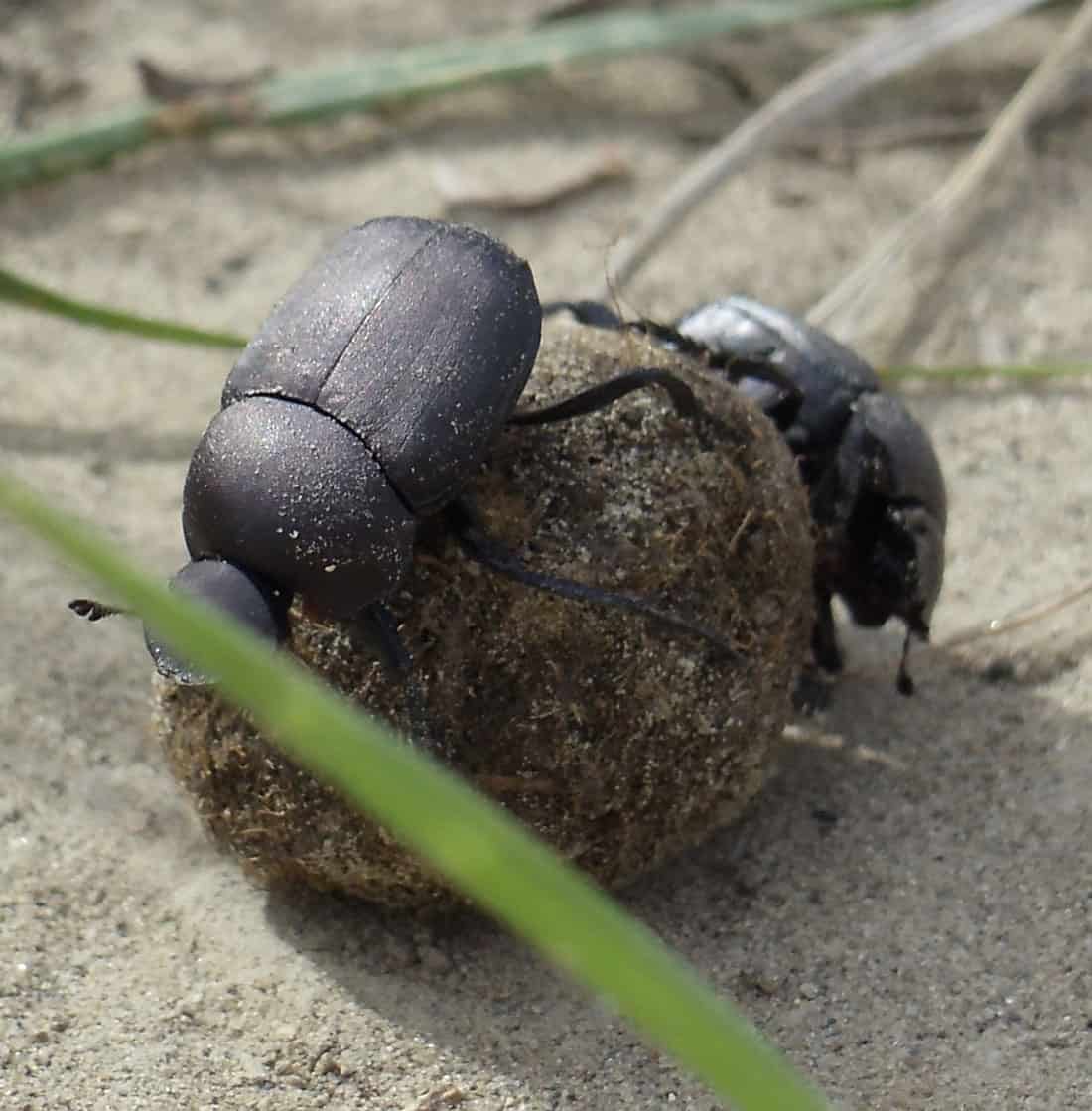With the exception of Antarctica, dung beetles can be found on every continent on Earth.
These insects play an important role in forest regeneration by spreading seeds and nutrients throughout the forest floor. Dung beetles also promote a healthier ecosystem for animals and humans by consuming feces and suppressing parasites.
Like many species, dung beetles are susceptible to ecological changes. Researchers recently published a that look at the effect of the 2015-2016 droughts and fires in the Amazon brought on by the the most severe El Niño on record.

To study dung beetle populations, researcher created dung traps, small mesh enclosed arenas placed on the forest floor filled with a mix of human and pig poop and artificial seeds. Researchers then counted the number of dung beetles and measured their physical activity within the arena.
Measurements taken in the dung traps before in 2010 and after the El Niño forest fires of 2015-2016 were compared to see what the affect of drought and fire stressors have on the beetles.
The most stark results researchers found was the dung beetle populations dropped almost 70% when compared to pre-El Niño populations in areas that had burned.
Dung beetles tend to nest in the upper layers of the soil (between 0 and 6 inches) which means that any fire passing through an area will reach and kill them.

In forest areas that had not burned but had experienced drought during El Niño, 60% of dung beetle populations had disappeared. With reduced populations, the ability of the dung beetles to remove dung and spread seeds was greatly diminished.
Researchers found that recovery of dung beetle populations post-fire and drought took two years.
While beetle populations in fire-adapted ecosystems tend to rebound quickly, dung beetle populations in the Amazon are not acclimated to fire and recovery in tropical forests can take many years.
The Study
França, F. M., Ferreira, J., Vaz‐de‐Mello, F. Z., Maia, L. F., Berenguer, E., Ferraz Palmeira, A., … & Barlow, J. (2020). El Niño impacts on human‐modified tropical forests: Consequences for dung beetle diversity and associated ecological processes. Biotropica. https://doi.org/10.1111/btp.12756
Ferreira, J. (2020, March 9). Dung beetles help rainforests regrow – but extreme drought and wildfires in the Amazon are killing them off. The Conversation. https://theconversation.com/dung-beetles-help-rainforests-regrow-but-extreme-drought-and-wildfires-in-the-amazon-are-killing-them-off-130444
